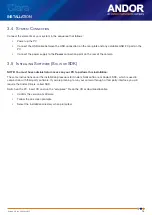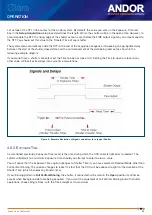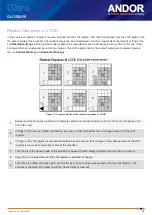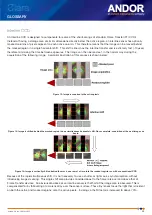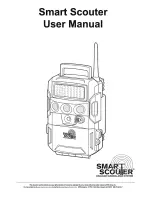
Clara
30
Version 2.0 rev 24 Mar 2015
Interline CCD
An Interline CCD is designed to compensate for some of the shortcomings of standard Frame Transfer (FT) CCD’s.
Instead of having a storage area of similar dimensions directly below the active region, an interline sensor has optically
masked columns of pixels adjacent to each active column. This therefore means that the image can be moved behind
the masked region in a single horizontal shift. This shift is known as the interline transfer and is extremely fast (~10µsec)
therefore minimising the time between exposures. The image can then be read out, in the normal way, during the
acquisition of the following image. A pictorial illustration of this process is shown below:
Figure 12: Image is acquired in the active pixels
Figure 13: Image is shifted behind the masked region in one simultaneous horizontal shift. Once complete, acquisition of the next image can
begin.
Figure 14: Image is vertically shifted behind the mask, one row at a time, into the readout register as with a conventional CCD
Because of the rapid simultaneous shift, it is not necessary to use a shutter, or light source synchronisation, without
introducing image smearing. This single shift also provides an added boost to the frame rate over and above that of
Frame Transfer devices. An obvious drawback of an interline sensor is that half of the image area is obscured. This is
compensated for by fabricating a microlens array over the sensor surface. These tiny lenses focus the light that is incident
on both the active and masked regions, onto the active pixels. In doing so the fill factor is increased to above 70%.
GLOSSARY

